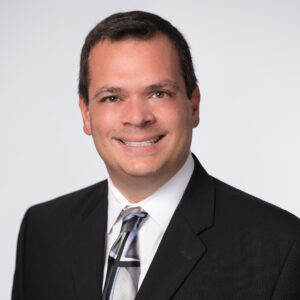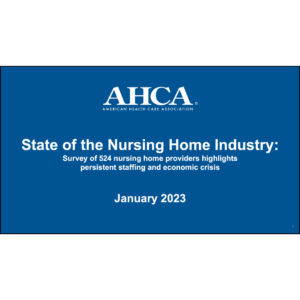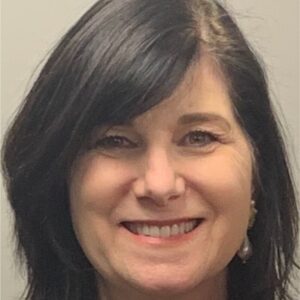Crisis in Care: How Senior Communities Can Tackle the Growing Staffing Shortage
In part one of this article, we explored the “America’s Unseen Workforce: The State of Family Caregiving” report, which identifies a looming caregiving crisis in the United States. According to the report, 48 percent of U.S. states are on the brink of an unpaid caregiving emergency, which extends to the senior care industry. In this article, two experts share their insights on factors contributing to the caregiving crisis and how the senior care industry can prepare for the increased caregiving demand driven by the aging Baby Boomer generation.
Staffing shortages in the healthcare industry exacerbate this issue and pose particular challenges to the senior care industry. Read on to discover how communities can respond to the caregiving crisis by addressing staffing challenges.
How Senior Care Communities Are Responding to the Caregiving Crisis in Light of Staffing Challenges
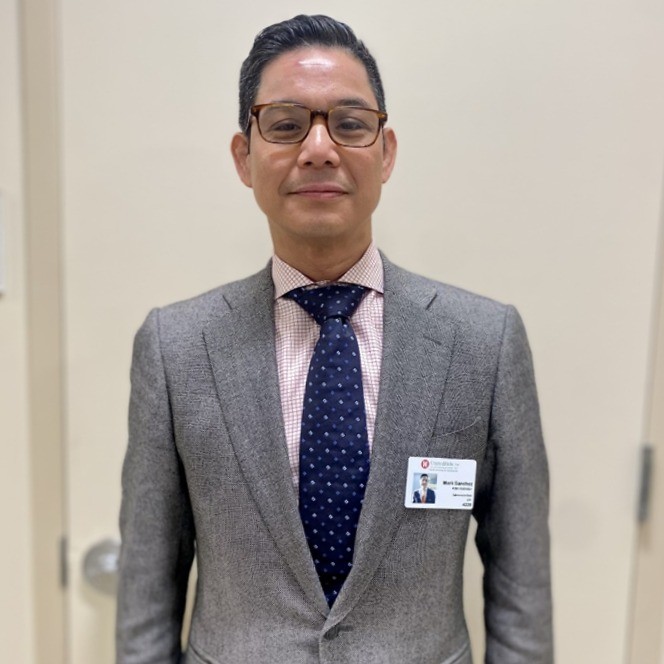
Mark Sanchez, COO/Administrator at United Hebrew of New Rochelle
The senior care industry is currently stretched thin. “Care teams are under pressure to do more with less, even as resident acuities rise and expectations grow,” says Mark Sanchez, COO/Administrator at United Hebrew of New Rochelle. “To manage, many communities are leveraging temporary staffing services and creative scheduling tactics, but these are short-term fixes.”
Many operators are implementing crisis management strategies. These include cross-training staff across departments, reducing services like daily activities programming and transportation, and increasing family involvement in basic care tasks. “Some facilities are offering signing bonuses, flexible scheduling, and enhanced benefits packages, but these measures often prove insufficient given the scope of the shortage,” says Diane Ty, Managing Director of the Milken Institute Future of Aging Team.
Innovative Solutions to Staffing Challenges
Forward-thinking senior living communities are addressing staffing challenges through innovative solutions:
- Community-Driven Care Models: 2Life Communities has implemented an innovative approach with its Opus Newton development in Massachusetts. “This community addresses staffing costs by integrating resident participation into daily operations, requiring each resident to contribute ten hours monthly through activities like teaching classes or organizing social events,” says Ty. The model offers prepared meals three evenings per week and partners with local community centers that offer recreational activities, which further streamlines its operations.
- Cross-Training and Universal Employee Models: Truewood by Merrill Gardens has implemented a universal employee system across its Seattle operations. Staff members train across multiple departments, reducing dependency on temporary agency workers while also enabling career mobility. Streamlined meal service and transportation alternative, like ride-sharing partnerships in place of bus services, further streamline operations.
- Investing in Front-Line Staff Members: The Goodwin Living Citizenship Program supports employees with tutoring and raising money to help them achieve citizenship. It’s an example of how communities can take the time to understand their frontline essential workers’ lives and challenges; such programs can pay off with stronger recruitment and retention.
- Technology-Enhanced Care Delivery: Honor, which acquired Home Instead in 2021, has combined the home care network with advanced technology platforms to create the Honor Care Platform. Honor treats caregivers as “Care Professionals,” rather than as entry-level workers, and the platform provides caregivers with professional-grade tools for scheduling, client matching, and performance feedback.
- Technology as Workforce Multiplier: “NIC research shows that technology can mitigate workforce challenges by automating routine tasks, optimizing staff scheduling, enhancing recruitment and retention, and boosting staff morale,” says Ty.
Sanchez explains that United Hebrew of New Rochelle has also implemented several innovative strategies to attract and retain staff:
- Internal Career Pathways: Identify promising CNAs and supporting their professional development from CNA to LPN to RN, helping staff see a future here.
- Training Partnerships: “We host student nurses and CNAs onsite through affiliations with several colleges and universities, offering clinical rotations and real-world experience in a senior care setting,” says Sanchez. “That’s a recruitment source.”
- Regional Collaborations: Working with business leadership organizations like the Westchester County Association to identify needs and solutions. The WCA’s Healthcare Talent Pipeline Program works with healthcare employers and workforce agencies to build a steady talent stream.
- Community Engagement: Actively engaging with cultural organizations, churches, and retirement groups—including retired nurses looking to work part-time—to reach untapped populations of skilled professionals.
Potential Solutions to the Caregiving Emergency
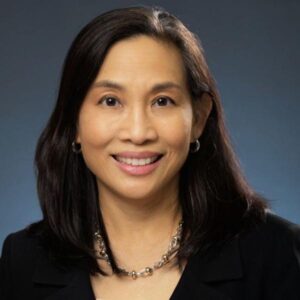
Diane Ty, Managing Director of the Milken Institute Future of Aging Team
Ty believes that addressing the caregiving emergency ultimately requires a comprehensive, multi-pronged approach. “We need significant workforce investment, including competitive wages, benefits, and clear career advancement pathways,” she says. “The current model of treating direct care as entry-level work with poverty wages is unsustainable, given the skilled, compassionate nature of this essential work. The challenge is creating better work environments beyond just pay.”
Additionally, Ty highlights the need to elevate the caregiving profession’s status and compensation to attract and retain quality workers, expand training and credentialing programs, and implement innovative scheduling solutions. She also notes the importance of recognizing that immigrant workers are essential to the country’s care infrastructure. Creating pathways for legal employment and residency is critical. “International competition for talent is intensifying. Roughly 14,000 Filipino registered nurses pass US licensing exams annually for all healthcare sectors, while senior housing and care alone need approximately 10,000 additional RNs per year, illustrating the scale of competition for limited talent pools,” she explains.
In light of the need of a comprehensive approach to solving the caregiving emergency, the most practical, immediate solutions are local. “Build partnerships, engage the community, and use every available channel to recruit, train, and support caregivers,” he recommends. “Scheduling innovation and digital staffing platforms help, but relationships, culture, and community will always be at the core of retention.”
Looking Ahead
Addressing the caregiving crisis is an urgent priority for the senior care industry. While a comprehensive, multi-faceted strategy is essential, senior care communities must also act swiftly to prepare for the growing demand for services. “The caregiving crisis is not hypothetical—it’s unfolding now,” says Sanchez. “But with collaboration across sectors, communities, and levels of government, we can build a care system that is equipped for the future and worthy of the people it serves.”

Paige Cerulli is a contributing writer to i Advance Senior Care.
Related Articles
Topics: Facility management , Featured Articles , Operations , Risk Management , Staffing






